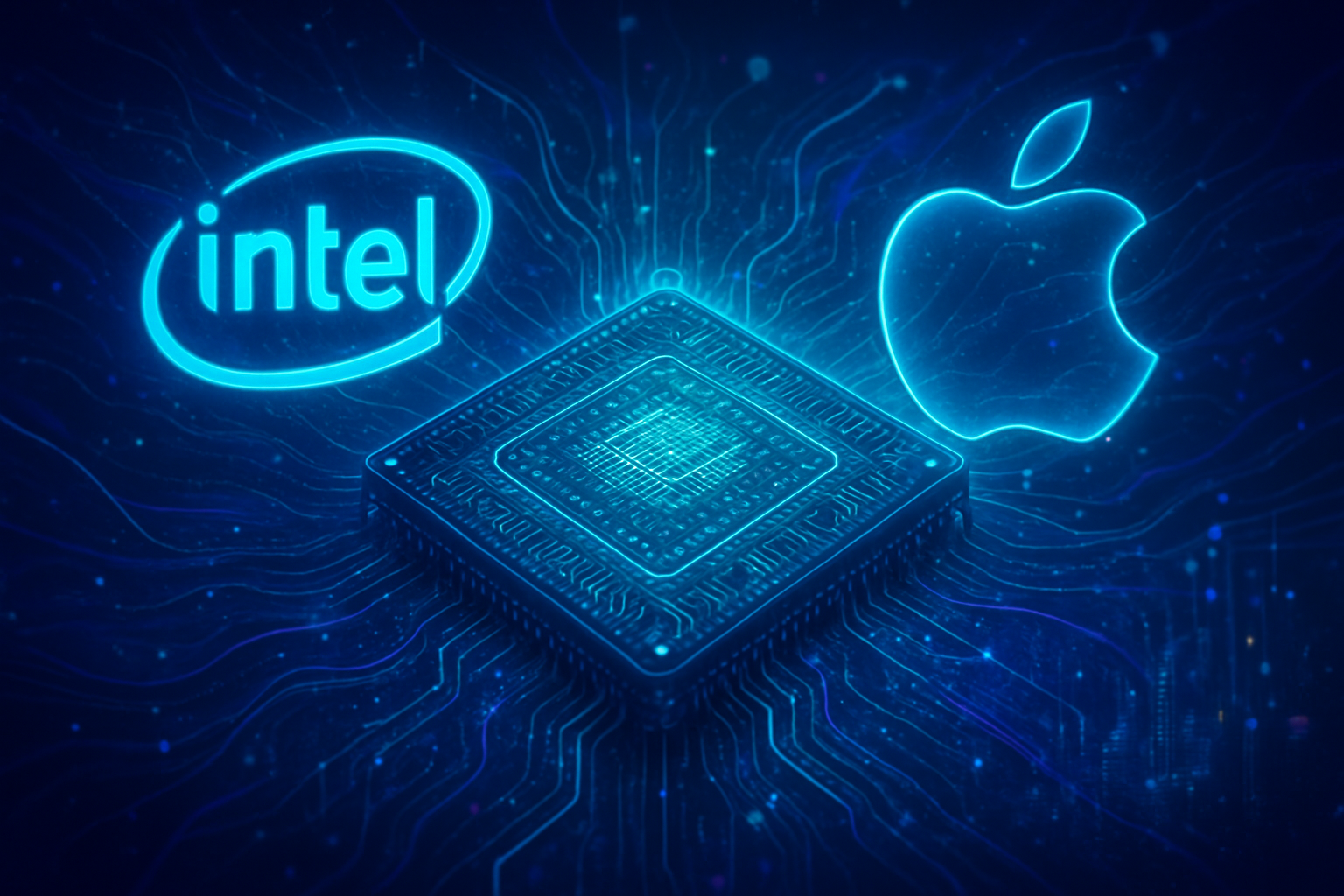San Jose, CA – December 2, 2025 – Microchip Technology (NASDAQ: MCHP) finds itself at the epicenter of a transformed global supply chain, grappling with inventory corrections, a significant cyberattack, and an evolving geopolitical landscape. As the semiconductor industry recalibrates from pandemic-era disruptions, Microchip's stock performance and strategic operational shifts offer a microcosm of the broader challenges and opportunities facing chipmakers and the wider tech sector. Despite short-term headwinds, including projected revenue declines, analysts maintain a cautiously optimistic outlook, banking on the company's diversified portfolio and long-term market recovery.
The current narrative for Microchip Technology is one of strategic adaptation in a volatile environment. The company, a leading provider of smart, connected, and secure embedded control solutions, has been particularly affected by the industry-wide inventory correction, which saw customers destock excess chips accumulated during the supply crunch. This has led to a period of "undershipping" actual underlying demand, designed to facilitate inventory rebalancing, and consequently, muted revenue growth expectations for fiscal year 2026. This dynamic, coupled with a notable cyberattack in August 2024 that disrupted manufacturing and IT systems, underscores the multifaceted pressures on modern semiconductor operations.
Supply Chain Dynamics: Microchip Technology's Strategic Response to Disruption
Microchip Technology's recent performance and operational adjustments vividly illustrate the profound impact of supply chain dynamics. The primary challenge in late 2024 and extending into 2025 has been the global semiconductor inventory correction. After a period of aggressive stockpiling, particularly in the industrial and automotive sectors in Europe and the Americas, customers are now working through their existing inventories, leading to significantly weaker demand for new chips. This has resulted in Microchip reporting elevated inventory levels, reaching 251 days in Q4 FY2025, a stark contrast to their pre-COVID target of 130-150 days.
In response, Microchip initiated a major restructuring in March 2025. This included the closure of Fab2 in the U.S. and the downsizing of Fabs 4 and 5, projected to yield annual cost savings of $90 million and $25 million respectively. Furthermore, the company renegotiated long-term wafer purchase agreements, incurring a $45 million non-recurring penalty to adjust restrictive contracts forged during the height of the supply chain crisis. These aggressive operational adjustments highlight a strategic pivot towards leaner manufacturing and greater cost efficiency. The August 2024 cyberattack served as a stark reminder of the digital vulnerabilities in the supply chain, causing manufacturing facilities to operate at "less than normal levels" and impacting order fulfillment. While the full financial implications were under investigation, such incidents introduce significant operational delays and potential revenue losses, demanding enhanced cybersecurity protocols across the industry. Despite these challenges, Microchip's non-GAAP net income and EPS surpassed guidance in Q2 FY2025, demonstrating strong underlying operational resilience.
Broader Industry Impact: Navigating the Semiconductor Crossroads
The supply chain dynamics affecting Microchip Technology resonate across the entire semiconductor and broader tech sector, presenting both formidable challenges and distinct opportunities. The persistent inventory correction is an industry-wide phenomenon, with many experts predicting "rolling periods of constraint environments" for specific chip nodes, rather than a universal return to equilibrium. This widespread destocking directly impacts sales volumes for all chipmakers as customers prioritize clearing existing stock.
However, amidst this correction, a powerful counter-trend is emerging: the explosive demand for Artificial Intelligence (AI) and High-Performance Computing (HPC). The widespread adoption of AI, from hyper-scale cloud computing to intelligent edge devices, is driving significant demand for specialized chips, memory components, and embedded control solutions – an area where Microchip Technology is strategically positioned. While the short-term inventory overhang affects general-purpose chips, the AI boom is expected to be a primary driver of growth in 2024 and beyond, particularly in the second half of the year. Geopolitical tensions, notably the US-China trade war and new export controls on AI technologies, continue to reshape global supply chains, creating uncertainties in material flow, tariffs, and the distribution of advanced computing power. These factors increase operational complexity and costs for global players like Microchip. The growing frequency of cyberattacks, as evidenced by incidents at Microchip, GlobalWafers, and Nexperia in 2024, underscores a critical and escalating vulnerability, necessitating substantial investment in cybersecurity across the entire supply chain.
The New Era of Supply Chain Resilience: A Strategic Imperative
The current supply chain challenges and Microchip Technology's responses underscore a fundamental shift in the tech industry's approach to global logistics. The "fragile" nature of highly optimized, lean supply chains, brutally exposed during the COVID-19 pandemic, has spurred a widespread reevaluation of outsourcing models. Companies are now prioritizing resilience and diversification over sheer cost efficiency. This involves investments in reshoring manufacturing capabilities, strengthening regional supply chains, and leveraging advanced supply chain technology to gain greater visibility and agility.
The focus on reducing reliance on single-source manufacturing hubs and diversifying supplier bases is a critical trend. This move aims to mitigate risks associated with geopolitical events, natural disasters, and localized disruptions. Furthermore, the rising threat of cyberattacks has elevated cybersecurity from an IT concern to a strategic supply chain imperative. The interconnectedness of modern manufacturing means a breach at one point can cascade, causing widespread operational paralysis. This new era demands robust digital defenses across the entire ecosystem. Compared to previous semiconductor cycles, where corrections were primarily demand-driven, the current environment is unique, characterized by a complex interplay of inventory rebalancing, geopolitical pressures, and technological shifts towards AI, making resilience a paramount competitive advantage.
Future Outlook: Navigating Growth and Persistent Challenges
Looking ahead, Microchip Technology remains optimistic about market recovery, anticipating an "inflexion point" as backlogs stabilize and begin to slightly increase after two years of decline. The company's strategic focus on "smart, connected, and secure embedded control solutions" positions it well to capitalize on the growing demand for AI at the edge, clean energy applications, and intelligent systems. Analysts foresee MCHP returning to profitability over the next three years, with projected revenue growth of 14.2% per year and EPS growth of 56.3% per annum for 2025 and 2026. The company also aims to return 100% of adjusted free cash flow to shareholders by March 2025, underscoring confidence in its financial health.
For the broader semiconductor industry, the inventory correction is expected to normalize, but with some experts foreseeing continued "rolling periods of constraint" for specific technologies. The insatiable demand for AI and high-performance computing will continue to be a significant growth driver, pushing innovation in chip design and manufacturing. However, persistent challenges remain, including the high capital expenditure required for new fabrication plants and equipment, ongoing delays in fab construction, and a growing shortage of skilled labor in semiconductor engineering and manufacturing. Addressing these infrastructure and talent gaps will be crucial for sustained growth and resilience. Experts predict a continued emphasis on regionalization of supply chains, increased investment in automation, and a heightened focus on cybersecurity as non-negotiable aspects of future operations.
Conclusion: Agile Supply Chains, Resilient Futures
Microchip Technology's journey through recent supply chain turbulence offers a compelling case study for the semiconductor industry. The company's proactive operational adjustments, including fab consolidation and contract renegotiations, alongside its strategic focus on high-growth embedded control solutions, demonstrate an agile response to a complex environment. While short-term challenges persist, the long-term outlook for Microchip and the broader semiconductor sector remains robust, driven by the transformative power of AI and the foundational role of chips in an increasingly connected world.
The key takeaway is that supply chain resilience is no longer a peripheral concern but a central strategic imperative for competitive advantage. Companies that can effectively manage inventory fluctuations, fortify against cyber threats, and navigate geopolitical complexities will be best positioned for success. As we move through 2025 and beyond, watching how Microchip Technology (NASDAQ: MCHP) continues to execute its strategic vision, how the industry-wide inventory correction fully unwinds, and how geopolitical factors shape manufacturing footprints will provide crucial insights into the future trajectory of the global tech landscape.
This content is intended for informational purposes only and represents analysis of current AI developments.
TokenRing AI delivers enterprise-grade solutions for multi-agent AI workflow orchestration, AI-powered development tools, and seamless remote collaboration platforms.
For more information, visit https://www.tokenring.ai/.









